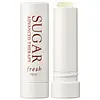What's inside
What's inside
 Key Ingredients
Key Ingredients

 Benefits
Benefits

 Concerns
Concerns

 Ingredients Side-by-side
Ingredients Side-by-side

Hydrogenated Polyisobutene
EmollientPhytosteryl/Isostearyl/Cetyl/Stearyl/Behenyl Dimer Dilinoleate
Skin ConditioningPolyisobutene
Diisostearyl Malate
EmollientOctyldodecyl Stearoyl Stearate
EmollientPolyglyceryl-10 Decaisostearate
EmollientSynthetic Wax
AbrasiveAluminum Starch Octenylsuccinate
AbsorbentOleic/Linoleic/Linolenic Polyglycerides
EmollientEthylene/Propylene/Styrene Copolymer
Sucrose Tetrastearate Triacetate
EmollientCamellia Japonica Seed Oil
EmollientButyrospermum Parkii Butter
Skin ConditioningEuphorbia Cerifera Wax
C30-50 Alcohols
EmulsifyingCandelilla Wax Esters
Disteardimonium Hectorite
StabilisingTheobroma Cacao Seed Butter
EmollientEthylene/Propylene Copolymer
AbrasiveEucalyptus Globulus Leaf Oil
PerfumingPolyethylene
AbrasiveCopernicia Cerifera Wax
Limonene
PerfumingButylene/Ethylene/Styrene Copolymer
Glycerin
HumectantPentaerythrityl Tetra-Di-T-Butyl Hydroxyhydrocinnamate
AntioxidantCeramide NP
Skin ConditioningTocopherol
AntioxidantPhytosphingosine
Skin ConditioningHyaluronic Acid
HumectantHydrogenated Lecithin
EmulsifyingHydrogenated Polyisobutene, Phytosteryl/Isostearyl/Cetyl/Stearyl/Behenyl Dimer Dilinoleate, Polyisobutene, Diisostearyl Malate, Octyldodecyl Stearoyl Stearate, Polyglyceryl-10 Decaisostearate, Synthetic Wax, Aluminum Starch Octenylsuccinate, Oleic/Linoleic/Linolenic Polyglycerides, Ethylene/Propylene/Styrene Copolymer, Sucrose Tetrastearate Triacetate, Camellia Japonica Seed Oil, Butyrospermum Parkii Butter, Euphorbia Cerifera Wax, C30-50 Alcohols, Candelilla Wax Esters, Disteardimonium Hectorite, Theobroma Cacao Seed Butter, Ethylene/Propylene Copolymer, Eucalyptus Globulus Leaf Oil, Polyethylene, Copernicia Cerifera Wax, Limonene, Butylene/Ethylene/Styrene Copolymer, Glycerin, Pentaerythrityl Tetra-Di-T-Butyl Hydroxyhydrocinnamate, Ceramide NP, Tocopherol, Phytosphingosine, Hyaluronic Acid, Hydrogenated Lecithin
Cera Alba
EmollientSimmondsia Chinensis Seed Oil
EmollientHydrogenated Olive Oil Decyl Esters
Emulsion StabilisingHydrogenated Palm Kernel Glycerides
EmollientRicinus Communis Seed Oil
MaskingVitis Vinifera Seed Oil
EmollientEthylhexyl Palmitate
EmollientParfum
MaskingHydrogenated Palm Glycerides
EmollientTheobroma Grandiflorum Seed Butter
Skin ConditioningPrunus Domestica Seed Oil
Skin ConditioningCopernicia Cerifera Wax
Limnanthes Alba Seed Oil
Skin ConditioningHydrogenated Vegetable Oil
EmollientPassiflora Incarnata Seed Oil
Skin ProtectingSucrose Tetrastearate Triacetate
EmollientCrithmum Maritimum Extract
Skin ConditioningCommiphora Mukul Resin Extract
Skin ConditioningRibes Nigrum Seed Oil
EmollientTocopherol
AntioxidantAscorbyl Tetraisopalmitate
AntioxidantTocopheryl Acetate
AntioxidantAscorbyl Palmitate
AntioxidantPEG-6 Isostearate
EmulsifyingCaprylic/Capric Triglyceride
MaskingAmmonium Glycyrrhizate
MaskingTrihydroxystearin
Skin ConditioningHesperetin Laurate
AntioxidantVanillin
MaskingButylene Glycol
HumectantBHT
AntioxidantCaprylyl Glycol
EmollientSodium Hyaluronate
HumectantHexylene Glycol
EmulsifyingPhenoxyethanol
PreservativeLimonene
PerfumingCitral
PerfumingBenzyl Alcohol
PerfumingLinalool
PerfumingGeraniol
PerfumingCera Alba, Simmondsia Chinensis Seed Oil, Hydrogenated Olive Oil Decyl Esters, Hydrogenated Palm Kernel Glycerides, Ricinus Communis Seed Oil, Vitis Vinifera Seed Oil, Ethylhexyl Palmitate, Parfum, Hydrogenated Palm Glycerides, Theobroma Grandiflorum Seed Butter, Prunus Domestica Seed Oil, Copernicia Cerifera Wax, Limnanthes Alba Seed Oil, Hydrogenated Vegetable Oil, Passiflora Incarnata Seed Oil, Sucrose Tetrastearate Triacetate, Crithmum Maritimum Extract, Commiphora Mukul Resin Extract, Ribes Nigrum Seed Oil, Tocopherol, Ascorbyl Tetraisopalmitate, Tocopheryl Acetate, Ascorbyl Palmitate, PEG-6 Isostearate, Caprylic/Capric Triglyceride, Ammonium Glycyrrhizate, Trihydroxystearin, Hesperetin Laurate, Vanillin, Butylene Glycol, BHT, Caprylyl Glycol, Sodium Hyaluronate, Hexylene Glycol, Phenoxyethanol, Limonene, Citral, Benzyl Alcohol, Linalool, Geraniol
Alternatives
Ingredients Explained
These ingredients are found in both products.
Ingredients higher up in an ingredient list are typically present in a larger amount.
Copernicia Cerifera Wax comes from a palm tree native to Brazil; another name for this ingredient is Carnauba Wax.
This ingredient is used to thicken texture and also leaves behind a film when applied.
Fun fact: This wax has the highest melting point of all natural waxes and low solubility.
Learn more about Copernicia Cerifera WaxLimonene is a fragrance that adds scent and taste to a formulation.
It's found in the peel oil of citrus fruits and other plants such as lavender and eucalyptus. The scent of limonene is generally described as "sweet citrus".
Limonene acts as an antioxidant, meaning it helps neutralize free radicals.
When exposed to air, oxidized limonene may sensitize the skin. Because of this, limonene is often avoided by people with sensitive skin.
The term 'fragrance' is not regulated in many countries. In many cases, it is up to the brand to define this term. For instance, many brands choose to label themselves as "fragrance-free" because they are not using synthetic fragrances. However, their products may still contain ingredients such as essential oils that are considered a fragrance.
Learn more about LimoneneSucrose Tetrastearate Triacetate isn't fungal acne safe.
Tocopherol (also known as Vitamin E) is a common antioxidant used to help protect the skin from free-radicals and strengthen the skin barrier. It's also fat soluble - this means our skin is great at absorbing it.
Vitamin E also helps keep your natural skin lipids healthy. Your lipid skin barrier naturally consists of lipids, ceramides, and fatty acids. Vitamin E offers extra protection for your skin’s lipid barrier, keeping your skin healthy and nourished.
Another benefit is a bit of UV protection. Vitamin E helps reduce the damage caused by UVB rays. (It should not replace your sunscreen). Combining it with Vitamin C can decrease sunburned cells and hyperpigmentation after UV exposure.
You might have noticed Vitamin E + C often paired together. This is because it is great at stabilizing Vitamin C. Using the two together helps increase the effectiveness of both ingredients.
There are often claims that Vitamin E can reduce/prevent scarring, but these claims haven't been confirmed by scientific research.
Learn more about Tocopherol